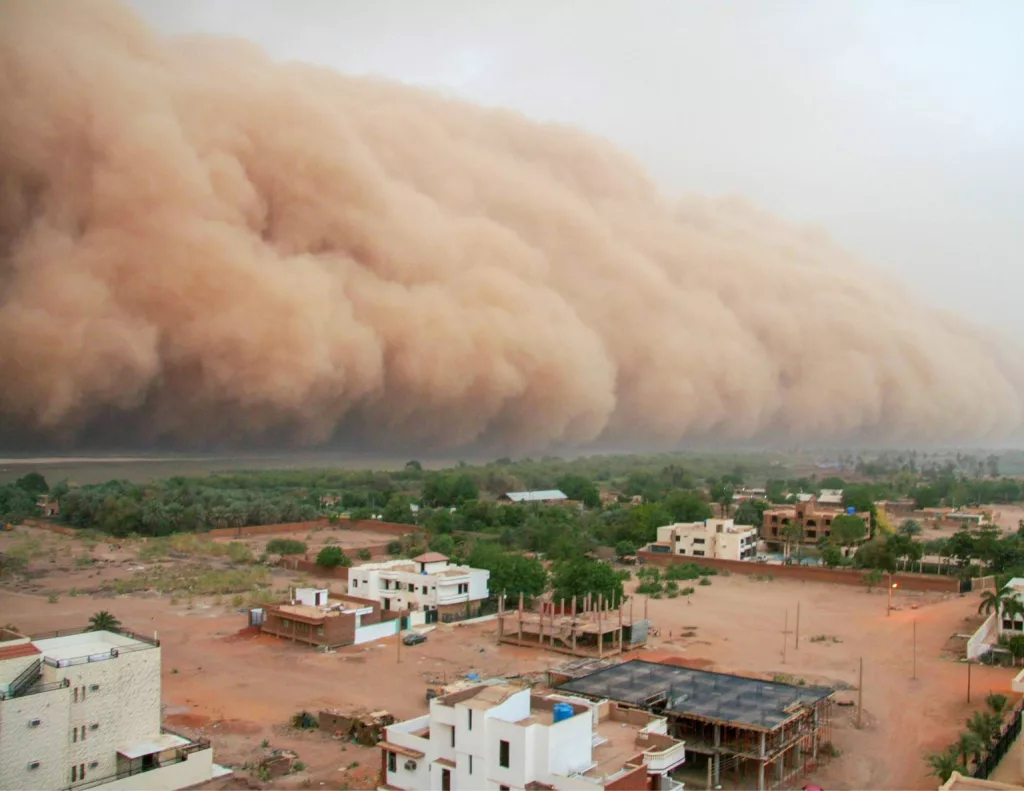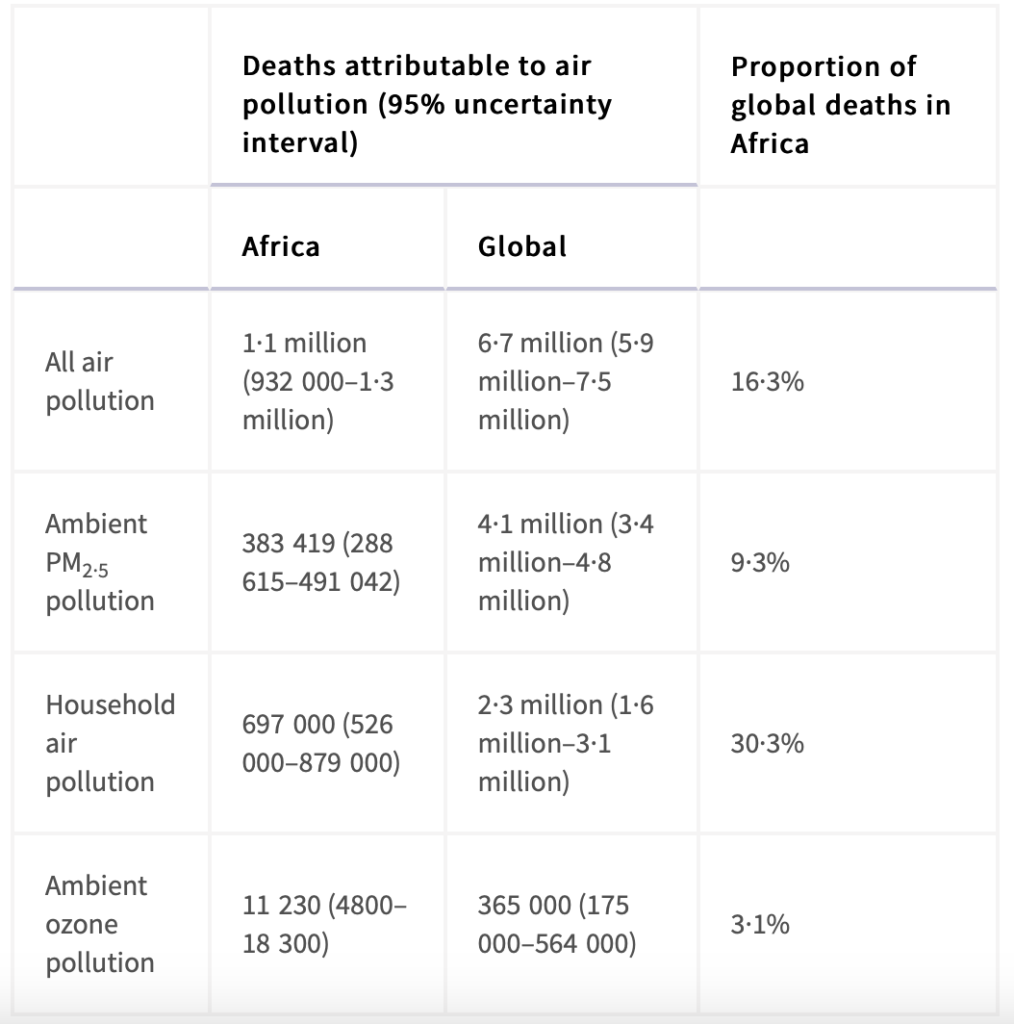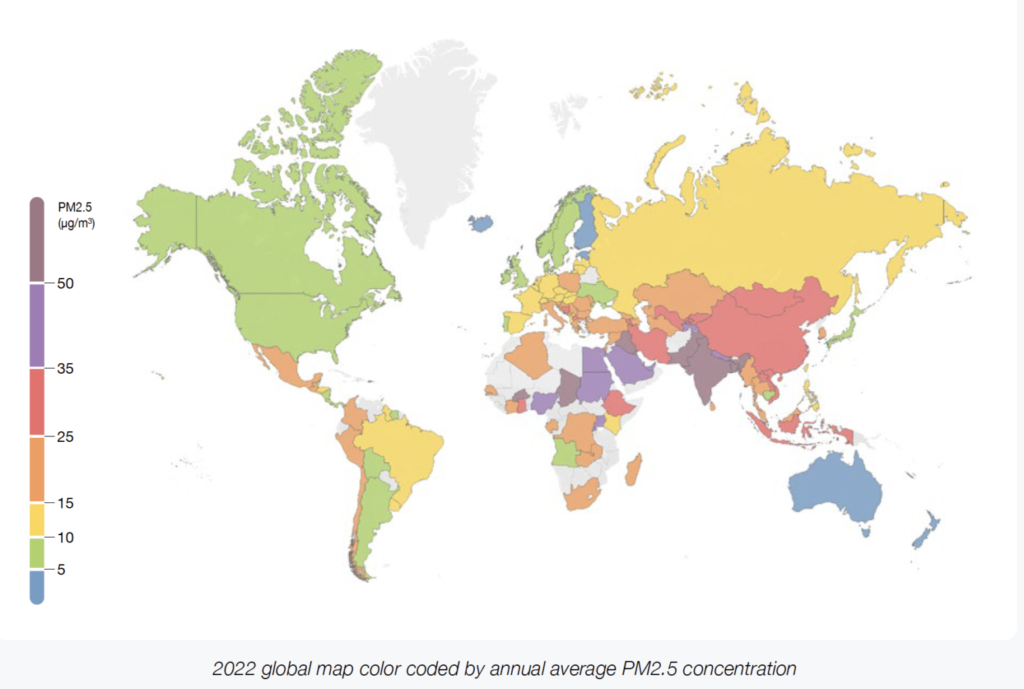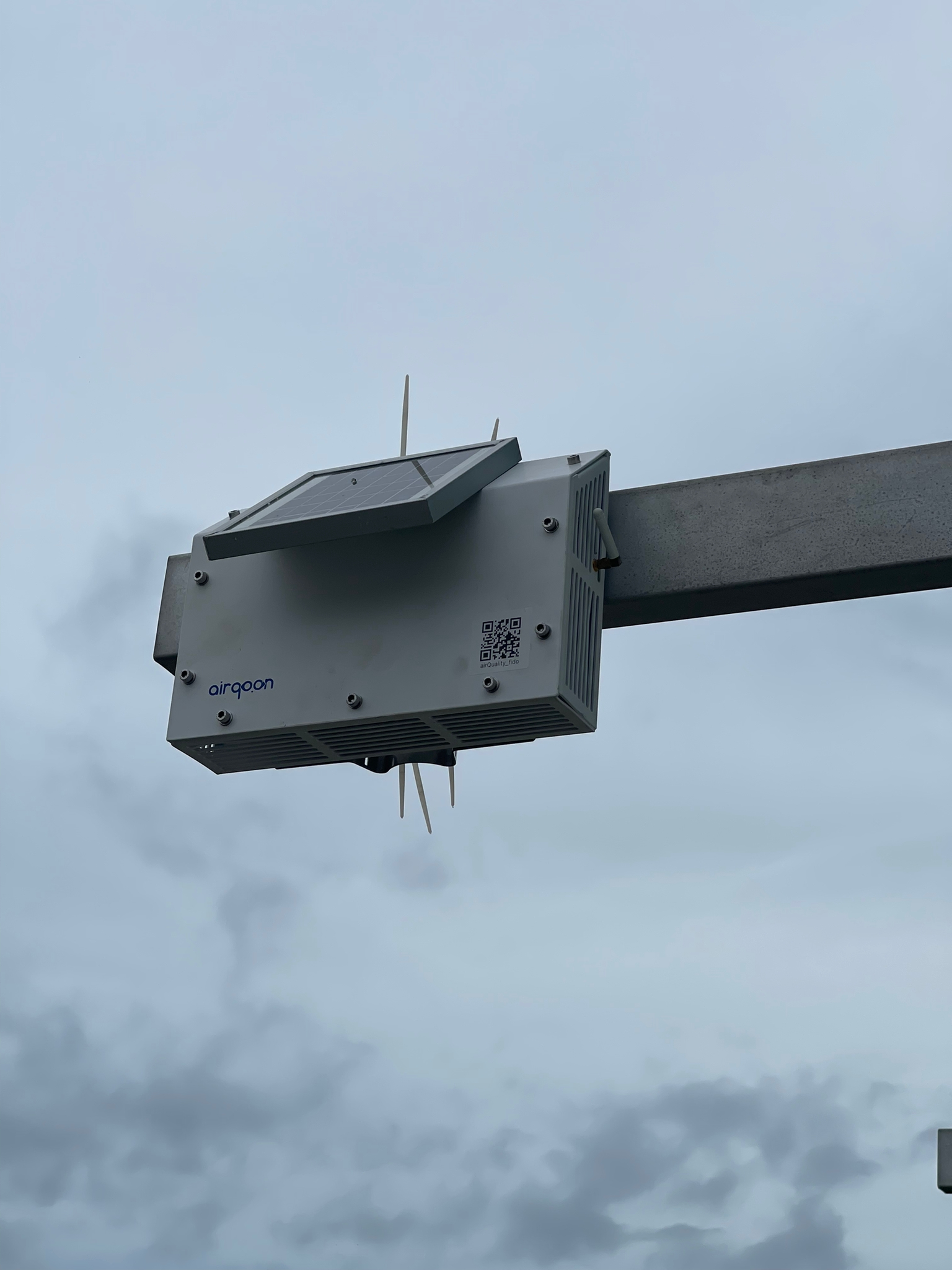Climate injustices experienced in Africa, the least vulnerable continent to the climate crisis, are not equal to air pollution.

Air pollution is the second leading risk factor for death across the continent due to Western countries moving industrial zones to Asian and African countries far from them to solve air pollution, inadequate health systems, lack of equal distribution of access to clean energy across the continent, limited air quality data on the continent.
In Africa, PM2.5 comes from many of the same resources found elsewhere in the world, including the use of solid fuels for cooking, the use of fossil fuels for energy production (coal, oil, and gas), vehicles, artisanal mining, agriculture, forest fires and industrial and semi-industrial activities such as open waste fire pits (Henderson, 2022). In arid and semi-arid regions of Africa, including the Sahara and Sahel region in the south, dust, and sandstorms also significantly contribute to air pollution (HEI & IHME, 2022)..

Africa is home to five of the ten most polluted countries worldwide regarding outdoor fine particulate matter (PM2.5). Among these countries, Niger, Nigeria, Egypt, Mauritania, and Cameroon experience exposure to fine particulate matter (PM2.5) as high as 65-80 micrograms (μg/m3) per cubic meter (HEI & IHME, 2022).. Outdoor PM2.5 is the most consistent predictor of deaths from cardiovascular, respiratory, and other diseases in long-term exposure to air pollution studies. In 2019, air pollution contributed to an estimated 1.1 million deaths in Africa, with 63% linked to household air pollution exposure (Henderson, 2022).
A UNICEF report notes that deaths from outdoor air pollution in Africa have risen by 57% in less than three decades, from 164,000 in 1990 to 258,000 in 2017, resulting in an annual GDP loss of over $215 billion. Pollution also shortened children’s lives by 24 months (UNICEF, 2019).

In 2019, according to the State of Air Quality and Health Impacts in Africa report, 14% of all deaths in children under 5 years of age across Africa were linked to air pollution, positioning air pollution as the third most significant risk factor for malnutrition, unsafe water, sanitation and post-hygiene deaths in sub-Saharan African regions (HEI & IHME, 2022).
Today, only 2 percent of the funds set to combat the climate crisis are directed to air pollution.
Another issue is that many do not know the harms of poor air quality, and only 17 countries in Africa have implemented national air quality standards policies. Vulnerable communities are exposed to air pollution. In many parts of the world, there are significant gaps in state-run regulatory instrumentation. Low-cost air quality monitors are becoming increasingly reliable and popular in low- and middle-income countries to close critical gaps in coverage that cannot afford more expensive vehicles.
IQAir’s 2022 World Air Quality Report presents PM2.5 air quality data from 7,323 cities in 131 countries, regions, and territories. The data used in this report was collected from more than 30,000 regulatory air quality monitoring stations and low-cost air quality sensors. The report shows how far behind the African continent is in air quality monitoring systems. Only 19 African countries had the ability to monitor air quality, and there are only 156 stations that produce all the included data for the continent (IQAir, 2022).

Low-cost sensor air monitoring is gaining momentum in Africa.
As cities in West, East, and Central Africa become increasingly vulnerable to air pollution, a study coordinated by the University of Lagos in Nigeria led to forming an interregional committee to work on air purification in five cities. 65 locally developed low-cost sensors will be deployed in the selected cities to complement them with existing reference monitors installed in relevant U.S. missions (Wansi, 2023).
At facilities in the cities of Kinshasa and Brazzaville in sub-S. In Africa, studies have been carried out for years using low-cost sensors to collect data on particle pollution. In the studies carried out, it was found that PM2.5 levels were more than 4 times the standard set by the World Health Organization. The new data highlights the need to improve air quality in these cities (Wilke, 2021).
The study, by Babatunde Awokola and her research team, supported by the African Centre for Clean Air (ACCA), focused on whether low-cost air quality monitors could help fill the knowledge gap about Africa’s air quality. Air quality monitors were installed in various locations in 9 different countries, and air quality monitoring in real-time for 30 days (Purple Air, 2023).
Low-cost sensors have an important place in improving the air quality of cities as they provide real-time information about air quality, make sense of it and provide more installation possibilities due to their cost. The air pollution in Africa affects first the citizens there and then all of us. Because we are all under the same sky, you can’t divide the air or set limits on it. Everyone deserves to protect their health from air pollution.
References
Cullinan, K. (2023). Some 90% of Countries Exceed WHO Air Pollution Guidelines; Report Includes “Citizen Science” Data from Low-Cost Monitors. Health Policy Watch.
HEI & IHME. (2022). The State of Air Quality and Health Impacts in Africa.
Henderson, E. (2022). New Report Highlights The Health Impacts of Air Pollution in Africa. News Medical Life Sciences.
IQAir. (2022). 2022 World Air Quality Report.
Purple Air. (2023). How Researchers Are Studying Air Quality in Africa.
UNICEF. (2019). Silent Suffocation in Africa.
Wansi, B.-I. (2023). AFRICA: Interregional Committee to Improve Air Quality in five Cities. Afrik21.
Wilke, C. (2021). Cheap Sensors Provide Missing Air Quality Data in African Cities. EOS.









